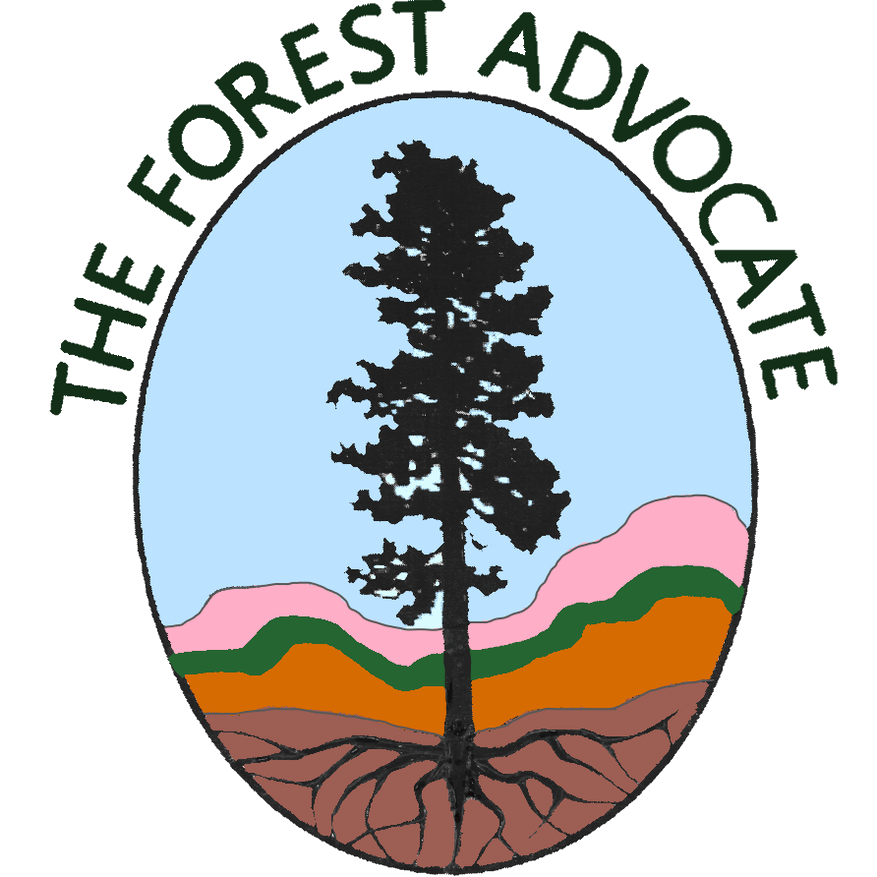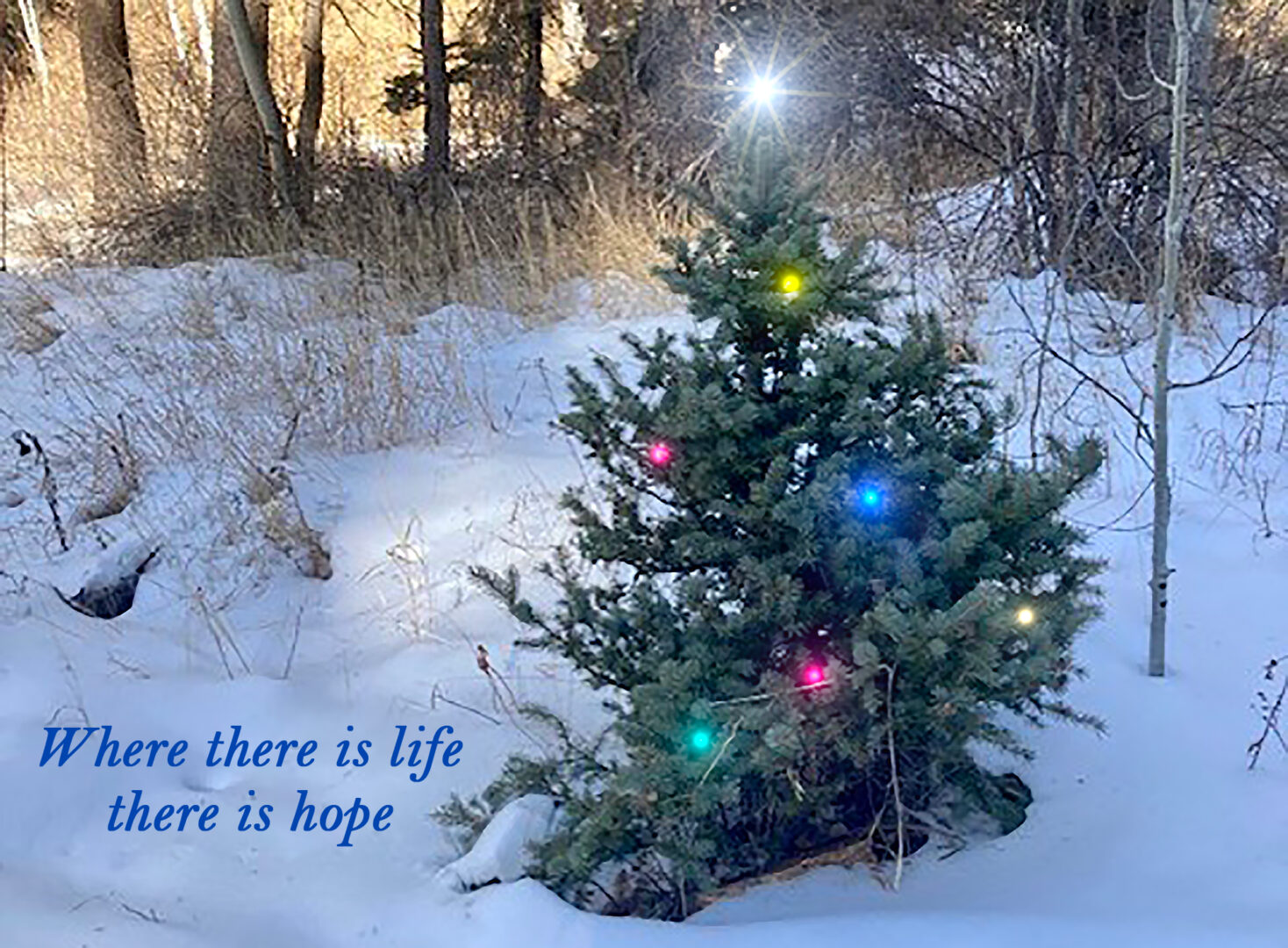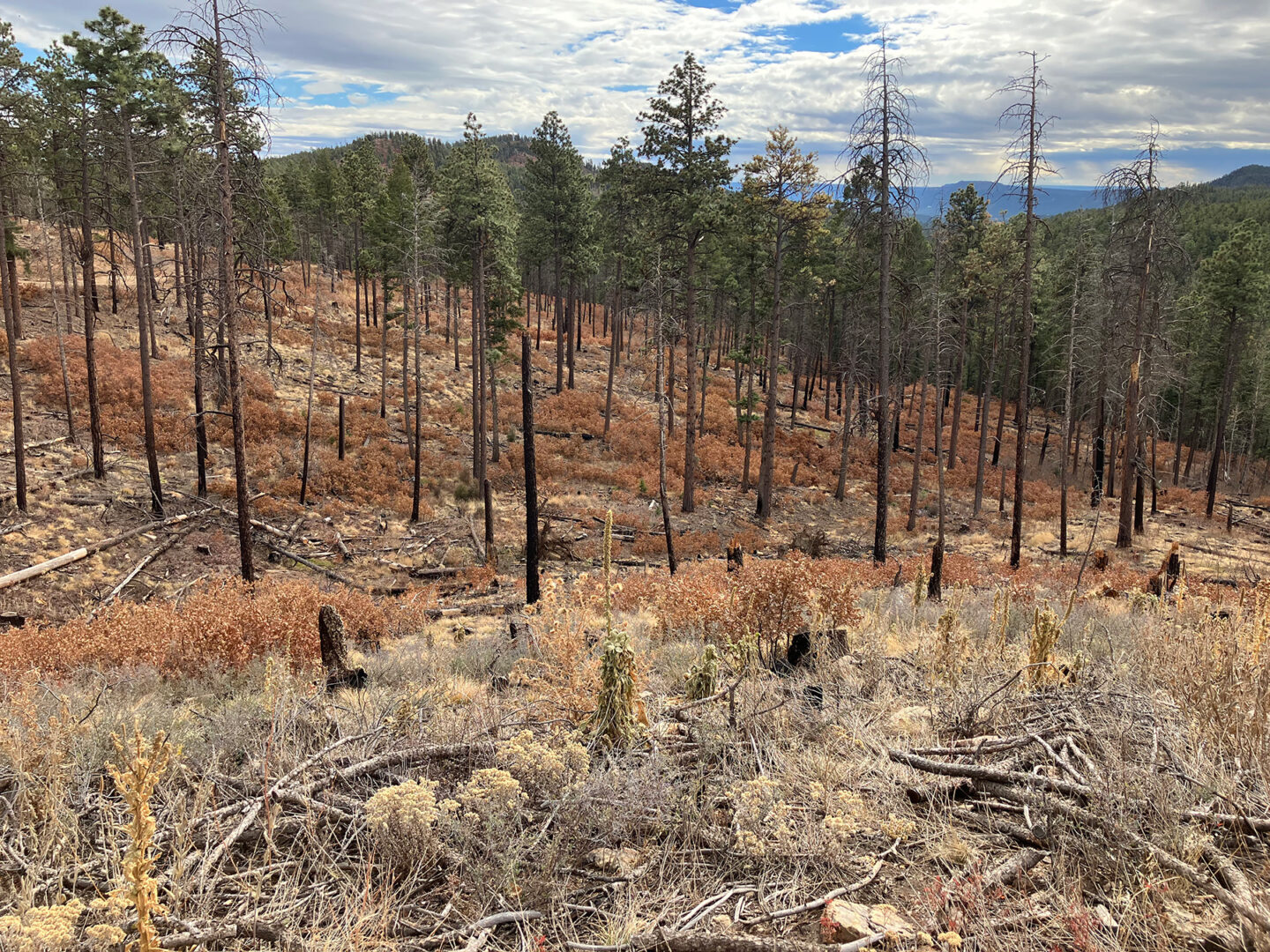|

|
|
|
|
|

|
|
|
May you have a happy and peaceful holiday season!
|
Snow is on the ground in the Santa Fe area – we’ve had our second major snow event of this winter. The moisture supports the life of the trees, of other forest vegetation, and the microorganisms in the soils.
|
After the rain or snow falls, the soils must be able to hold in the moisture. That requires sufficient tree canopy and a healthy intact understory. Aggressive tree cutting and overly-frequent intentional burning greatly reduce the tree canopy, causing the forest floor to be baked by the sun. Such cutting and burning almost entirely eliminates a natural forest understory and both churns up and compresses the soils, damaging the delicate but crucial mycorrhizal fungi.
|
Recently, along with other conservation organization members, I went on two field trips to the La Cueva area of the Santa Fe National Forest to see the results of tree cutting and subsequent prescribed burning that occurred 12 and 15 years ago. It was painful to see. The forest floor looked desiccated and alien to this area, with uncharacteristic vegetation growing (please see the photo below.) Yet, the Forest Service plans to apply such treatments over large swathes of forest near Santa Fe and across the West.
|
As ecologist George Wuerthner has written, our forests are not sick, and they do not need “chainsaw medicine.” Climate change and human impacts have caused some areas of forest to become out of balance. But chainsaws, masticators, and overly frequent and widespread intentional fire on the landscape clearly do not restore balance. All interventions in our forests must be thoroughly considered and carefully carried out, focused on maintaining moisture in the ecosystems which make them naturally more fire resistant.
|
There is new research underway to help determine whether thinning and prescribed burn treatments are effective for reducing the occurrence of high severity fires in the Southwest, and conservation alternatives are being developed that may genuinely promote forest health. The Forest Advocate is involved with other conservation organizations and conservation scientists in developing new research and strategies. Some major research papers concerning Southwestern fire and forest ecology will be coming out in the first half of this upcoming year.
|
An Ecoregional Conservation Assessment (ECA) was recently published for the Mogollon Highlands (forested area in North Central Arizona and Southwestern New Mexico) by Dominick DellaSala et al. This ECA presents a conservation design that considers appropriate wildfire responses to protect communities from the increasing risk of climate-induced wildfire. The assessment concludes: “Rather than oppose forest and woodland protections, land managers could work with conservation groups, landowners, and tribes to integrate fire risk reduction with conservation priorities by focusing on proven defensible space and home hardening while increasing the interval between fuel-reduction treatments to allow ecosystems time to maintain and recover at least some native understories.” A similar ECA is about to be developed for the Southern Rockies, including the Santa Fe National Forest. We also hope to create a specific conservation alternative to the Santa Fe Mountains Project, that can additionally serve as a template for other conservation projects that truly benefit forests and communities.
|
Joey Smallwood, who is graduating in May from Johns Hopkins with a dual masters in Environmental Science and GIS (Geographic Information Systems,) has been working on research comparing forest health between areas that have been treated by thinning and burning, areas that are untreated, and areas that have been impacted by bark beetles. So far, he is finding that treated areas have the highest land surface temperatures, which correspond with the lowest soil moisture. The graphic report of his research to date, “The Santa Fe Mountains and the Great Western Megadrought,” provides analysis of the changes that have occurred in the Santa Fe Mountains area during the last 20 years.
|
The Forest Advocate has continued advocating for forests, increasing awareness of the damage that heavy-handed thinning and overly-frequent burning treatments cause to forest ecosystems, and aiding in the development of research and conservation strategies to promote genuinely healthy forests and to protect communities. During the past year, The Forest Advocate has:
|
- Maintained an active forest news, resources, and advocacy website which includes Forest Service documents, project comments, studies by independent conservation scientists, and articles and editorials written by both myself and others, highlighting consequential forest issues.
- Produced regular email forest updates, with the latest news, research and perspective concerning the Santa Fe National Forest and other Western forests.
- Had forest advocacy articles published in numerous publications.
- Researched and made public that the USFS has been expanding wildfires greatly with “firing operations,” often utilized as fuels treatments without a NEPA (National Environmental Policy Act) analysis process. Held conversations with Forest Service officials and others about restricting firing operations.
- Advocated for the development of a cogent national wildfire policy, developed within a genuinely open NEPA process.
- Communicated with elected representatives’ liaisons to encourage their support for comprehensive analysis for forest projects, and to protect and preserve the Santa Fe National Forest and all Western forests.
- Interfaced with scientists and conservation groups to foster more research and planning for healthier and genuinely sustainable forests. Instigated and promoted ecological research.
|
We have been fortunate to receive funding for our day-to-day operations and to support some research, but we need additional funding to continue to develop and support new and important research projects and conservation planning. If you feel this is a priority for you, please contribute here. Join us in protecting our forests. There is still much life in our forests, and many areas of our forest are healthy, even if there is climate transition occurring. We owe intact and healthy forests to the upcoming generations.
|
Most of all, please stay aware of what is happening in our forests, and try not to experience all the confusion and complexity concerning Forest Service management efforts as hopeless. We have made inroads in preserving our forests. Some examples:
|
- Last October, the Forest Service was going to do a high risk prescribed burn in the Aztec Springs area off of Hyde Park Road in Santa Fe. Public protest caused them to defer the burn until it can be implemented more safely.
- The largest diameter tree that can be cut during the Santa Fe Mountains Project was reduced from 24” DBH (diameter at breast height) to 16” DBH, which will save many thousands of moisture-retaining mature trees.
- That the Forest Service has been expanding wildfires and essentially carrying out fuels treatments without a public analysis process under the auspices of emergency fire suppression is becoming much more widely known. This is the first step towards changing this Forest Service created “policy,” and to the development of a truly cohesive national wildfire policy through a comprehensive and open analysis process.
|
Have hope, be engaged, and let’s see what the New Year can bring for our forests and communities – through our collective efforts.
|
Thanks so much for the interest and support for our forests and communities.
|
|
|
|

|
La Cueva fuel break in the Santa Fe National Forest, thinned and burned approximately 15 years ago
|
|
|
|
|